Fleming Zuhling
in the calm of the night…

Field Stone Bowl (#25.2.1), found rock, 7 x 12 x 10 inches (18 x 30.5 x 25.5 cm), $300 Cdn (with Long-Handled Walnut Spoon, $375 Cdn).
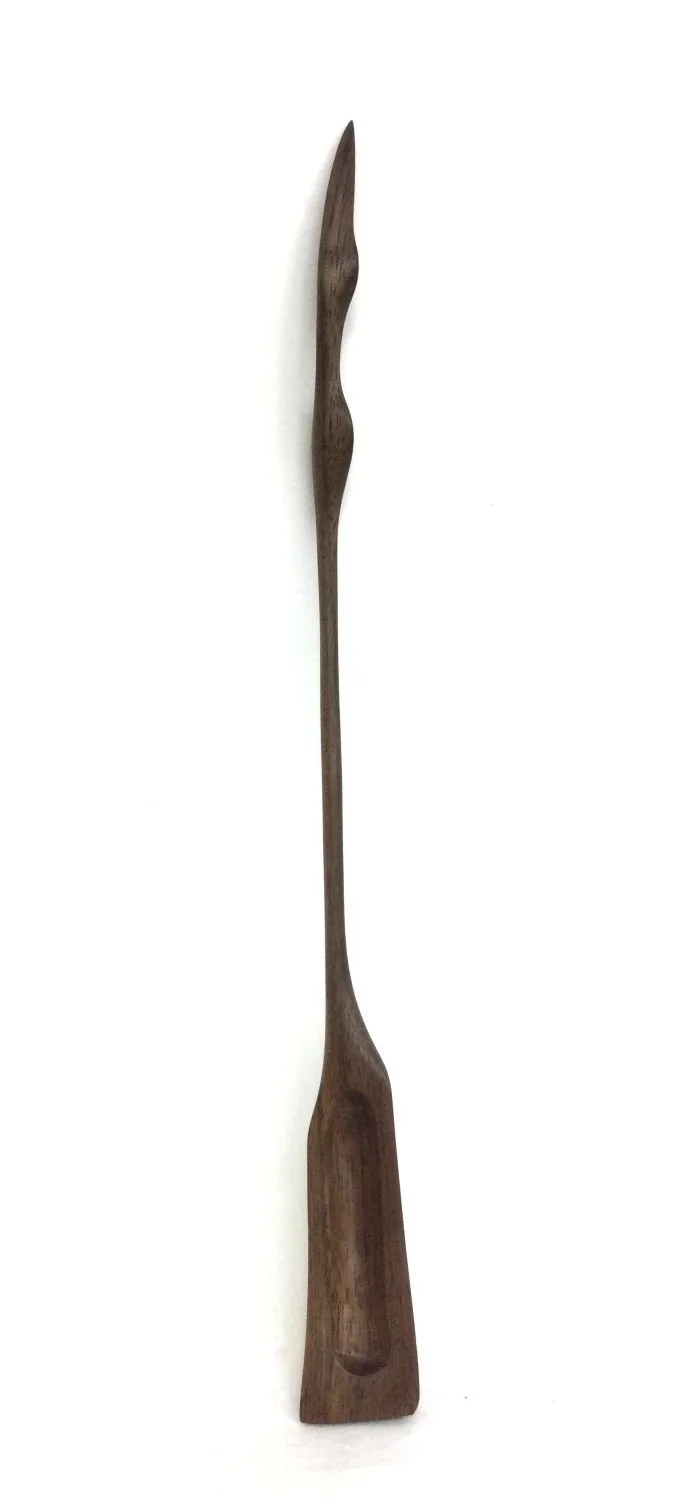
Long Handled Curvy Tasting Spoon (#25.2.14), 2025, chiselled and hand sanded walnut, 11 x 1 .5 inches (23 x 3 x 1.5 cm), $95 Cdn (with Field Stone Bowl (#25.2.1) $375 Cdn)

Field Stone Bowl (#25.2.2), found rock, 7 x 17 x 12.5 inches (18 x 43 x 32 cm), $450 Cdn (with Long-Handled Walnut Spoon, $525 Cdn).

Long-Handled Scoop (#25.2.15), 2025, chiselled and hand sanded walnut, 15 x .75 x .5 inches (38 x 2 x 1.5 cm), $95 Cdn (with Field Stone Bowl (#25.2.2) $525 Cdn)

Field Stone Bowl (#25.2.3), found rock, 7.75 x 16.5 x 10 inches (19.5 x 32 x 25.5 cm), $450 Cdn (with Long-Handled Walnut Spoon, $525 Cdn).
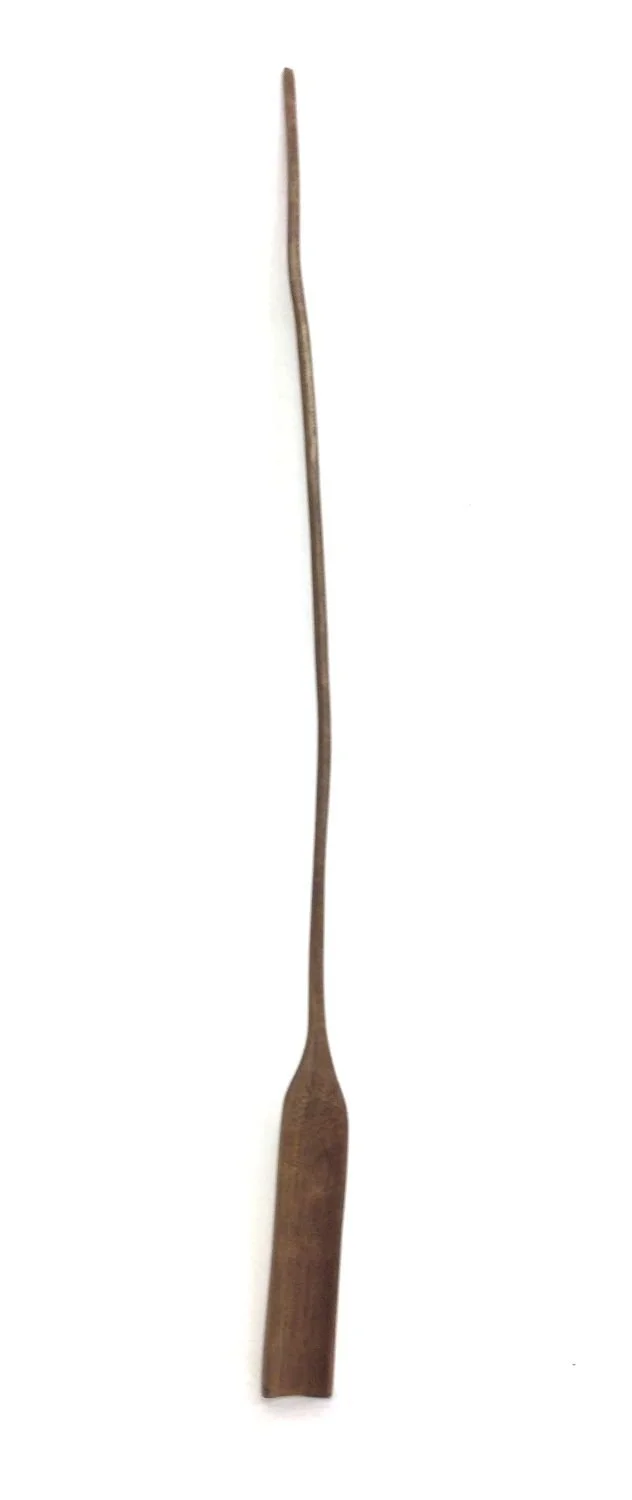
Long-Handled Tasting Spoon (#25.2.16), 2025, chiselled and hand sanded walnut, 15.5 x .75 inches (39.5 x 2 cm), $95 Cdn (with Field Stone Bowl (#25.2.3) $525 Cdn)

Field Stone Bowl (#25.2.4), found rock, 7 x 16 x 10.5 inches (18 x 40.5 x 26 cm), $450 Cdn (with Long-Handled Walnut Spoon, $525 Cdn).
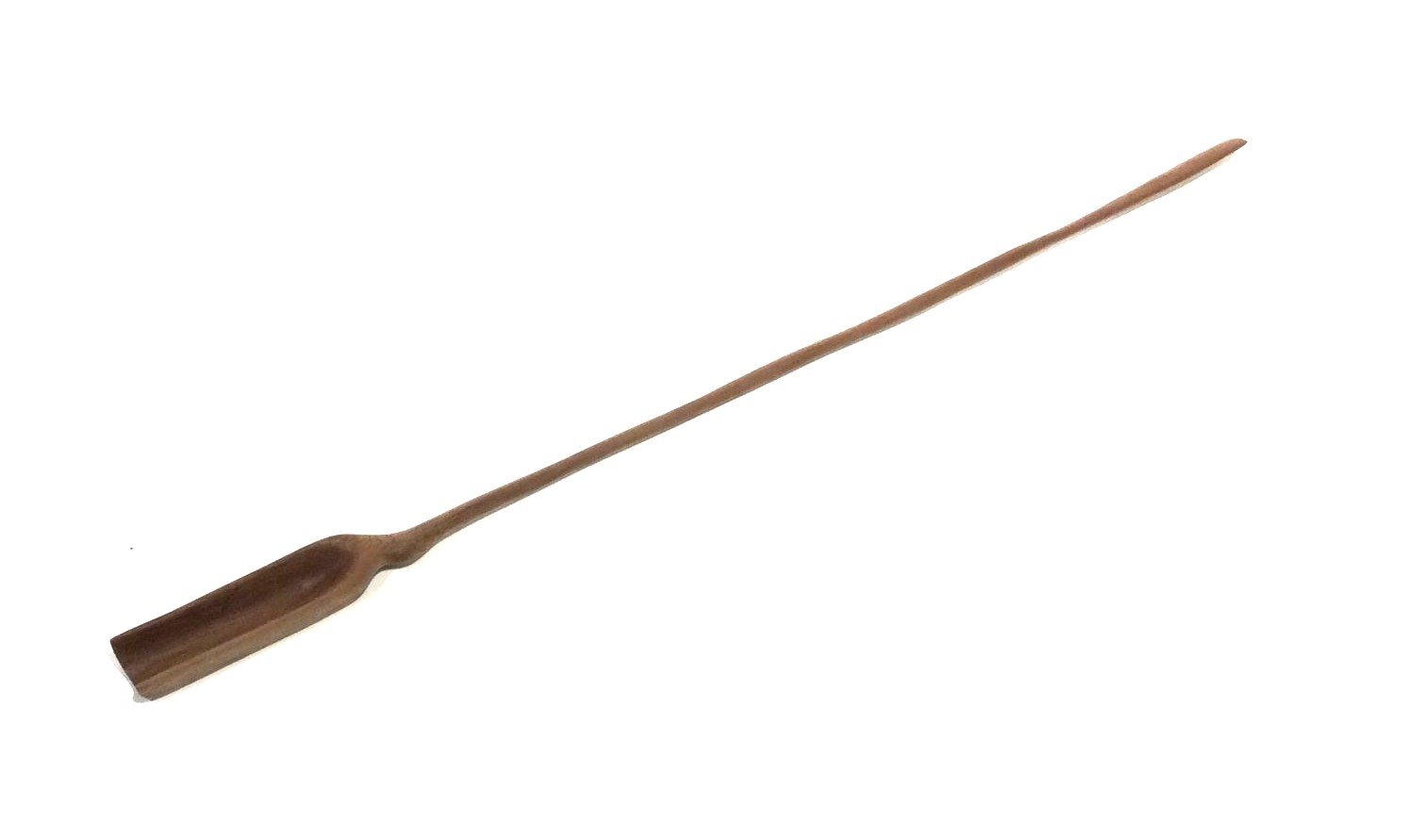
Long-Handled Spoon (#25.2.5), 2025, chiselled and hand sanded walnut, .25 x .5 x 14.5 inches (1 x 1.5 x 37 cm), $95 Cdn (with Field Stone Bowl (#25.2.4) $525 Cdn)
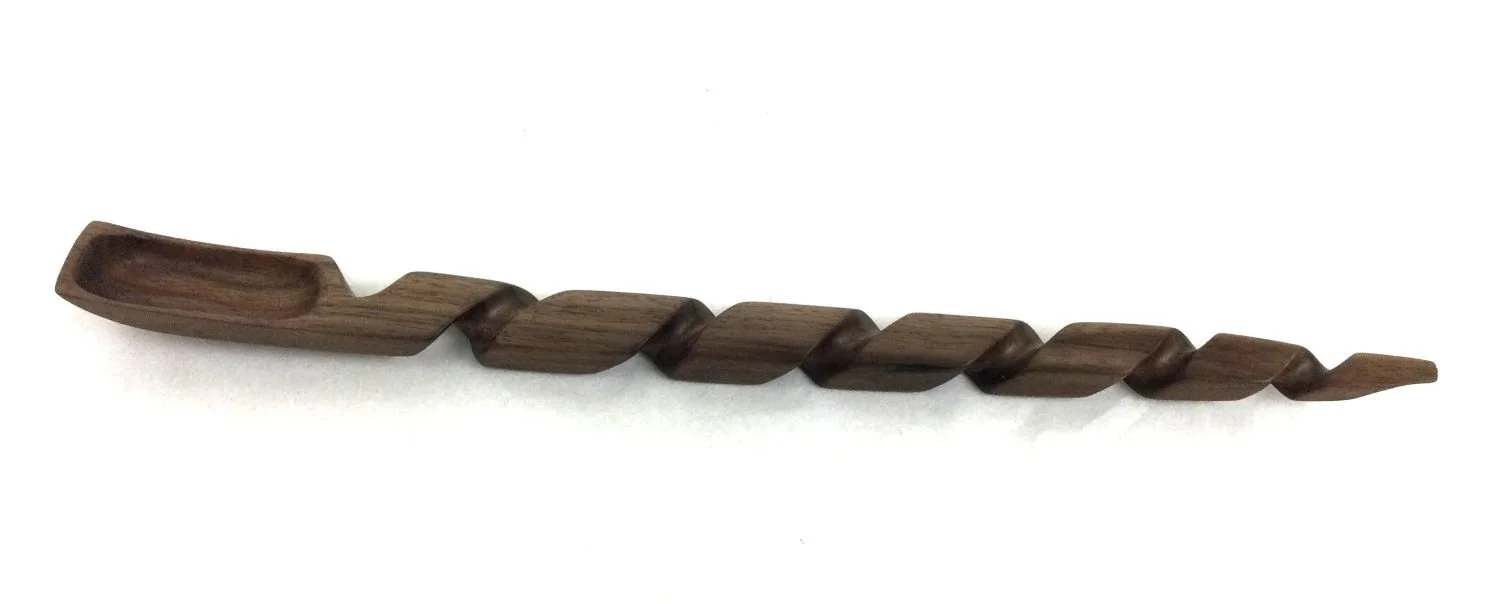
Curly Long-Handled Spoon (#25.2.13), 2025, chiselled and hand-sanded walnut, 15 x 1.25 x 1 inches (38 x 3 x 2.5 cm), $145 Cdn.

Tasking Spoon And Cheese Knife (#25.2.11), 2025, chiselled and hand sanded walnut, 11 x 1 x .75 inches (28 x 2.5 x 2 cm), $95 Cdn.
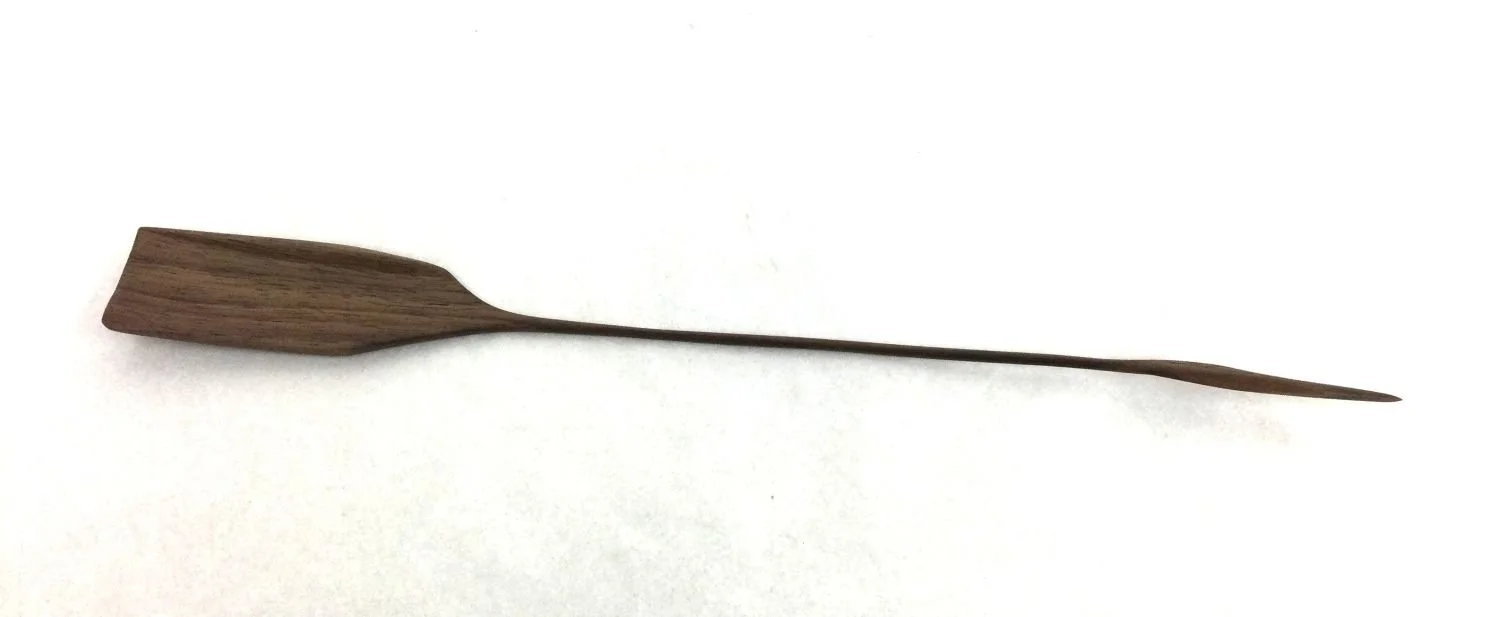
Long Handled Tasting Spoon and Charcuterie Pick (#25.2.12), 2025, chiselled and hand sanded walnut, 12.5 x 1.25 inches (32 x 3 cm), $95 Cdn.
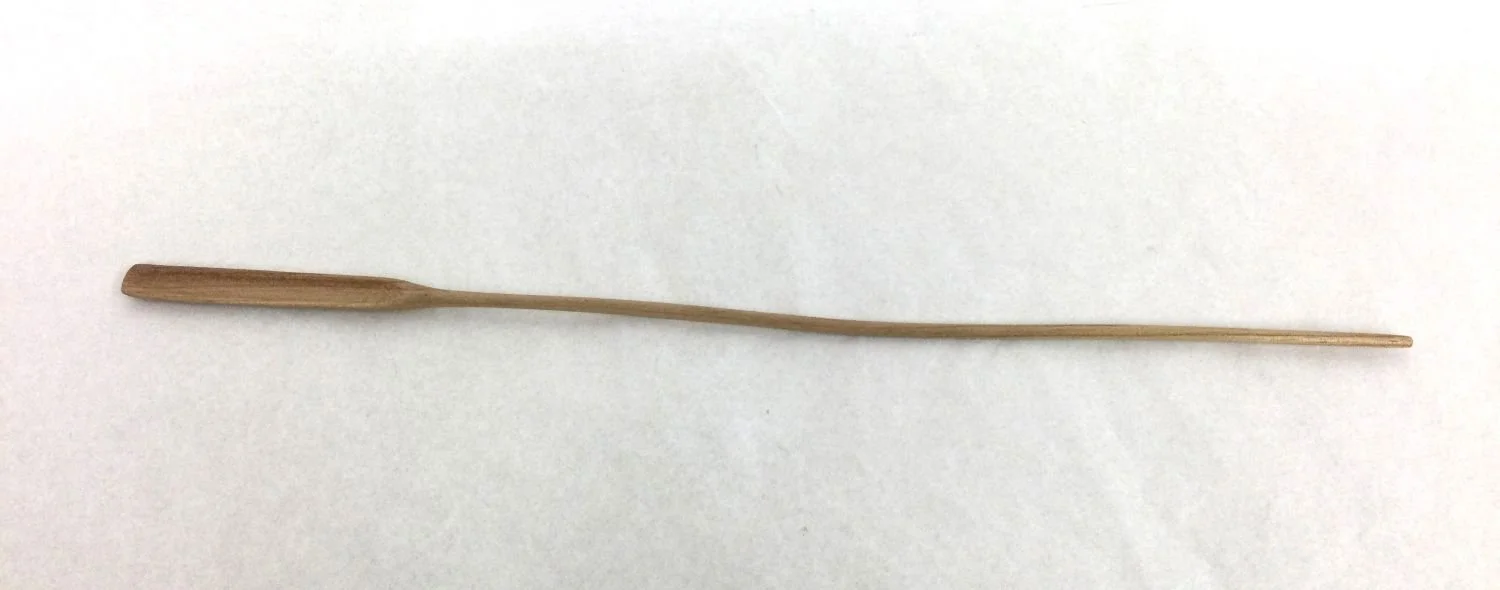
Long Handled Tasting Spoon (#25.2.9), 2025, chiselled and hand sanded walnut, 13 x .5 inches (33 x 1.5 cm), $95 Cdn.
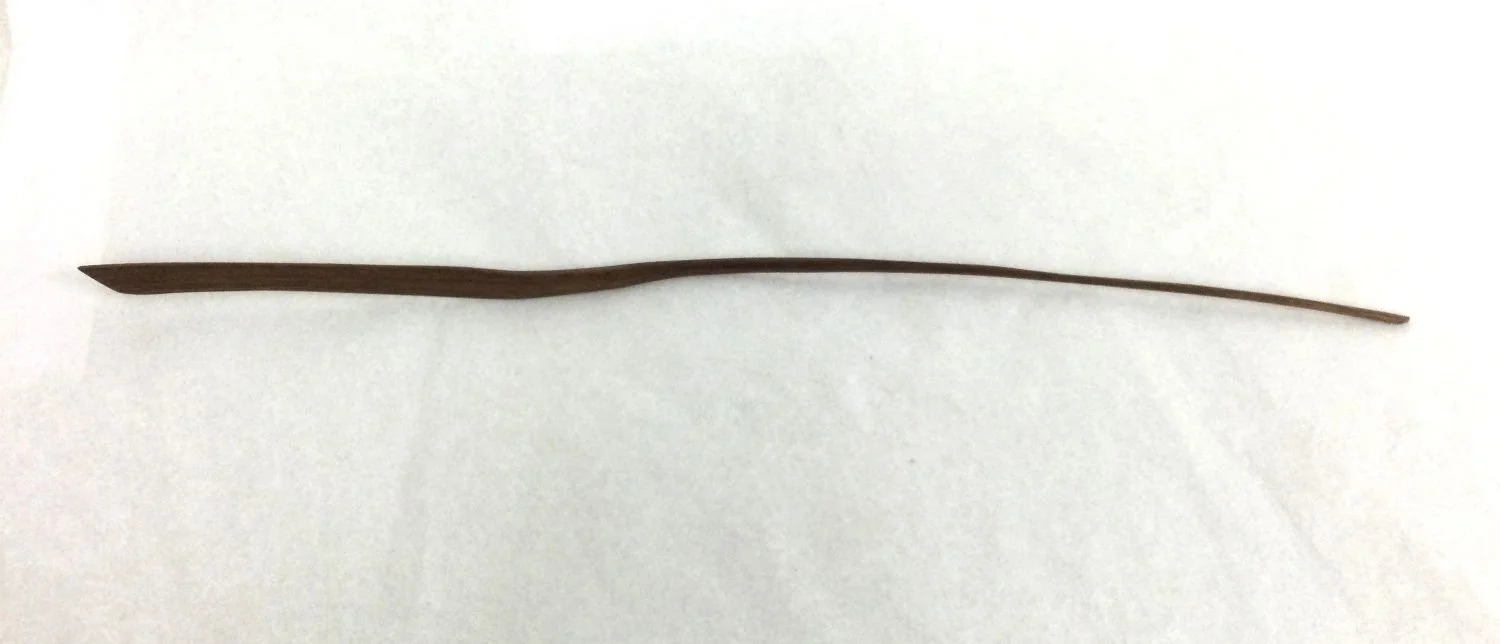
Long Handled Butter Knife (#25.2.8), 2025, chiselled and hand sanded walnut, 14.5 x .5 inches (37 x 1.5 cm), $95 Cdn.
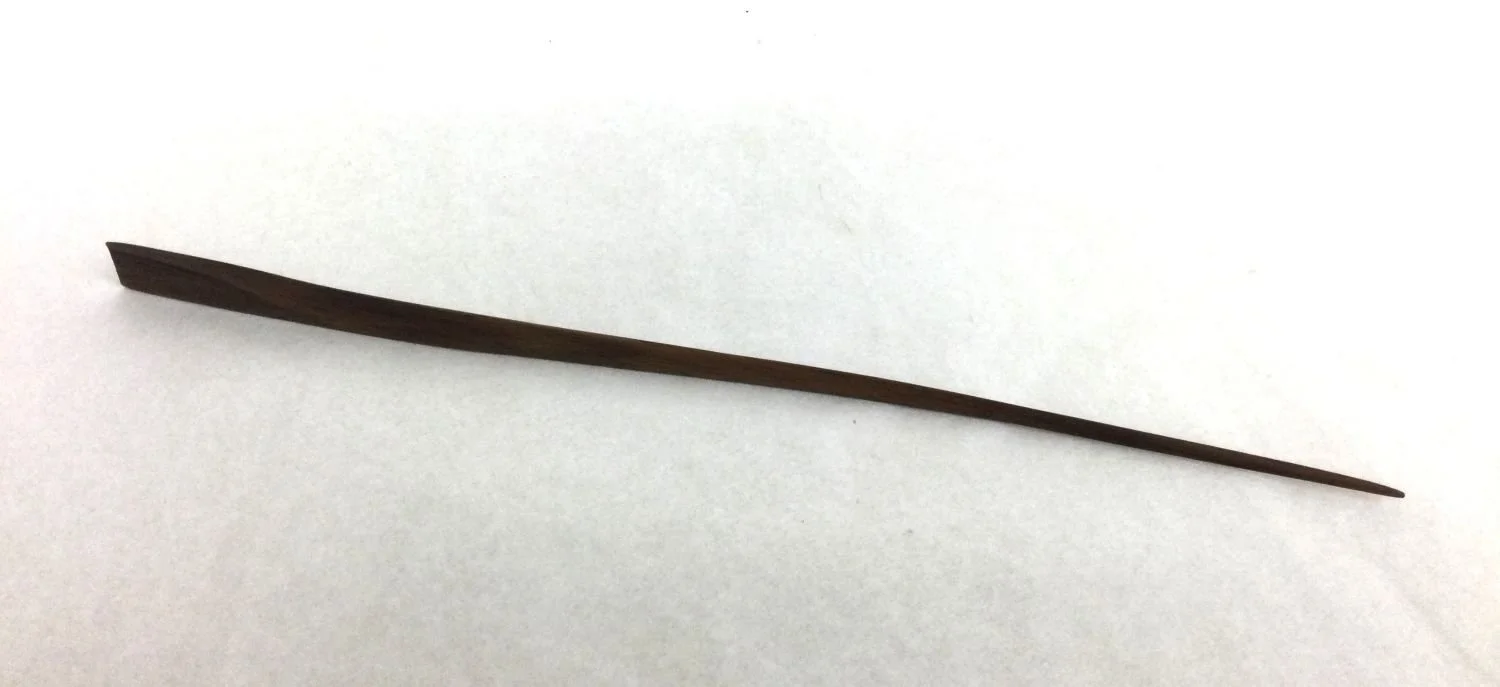
Long Handled Butter Knife (#25.2.10), 2025, chiselled and hand sanded walnut, 11.5 x .75 inches (29.5 x 2 cm), $95 Cdn.

Curvy Spoon (#25.2.6), 2025, chiselled and hand sanded walnut, .25 x .5 x 7.5 inches (1 x 1.5 x 19 cm), $49 Cdn.

Field Stone Bowl With Long Handled Spoon (2 pieces) 24.8, chiselled & hand sanded walnut, found rock, sold.
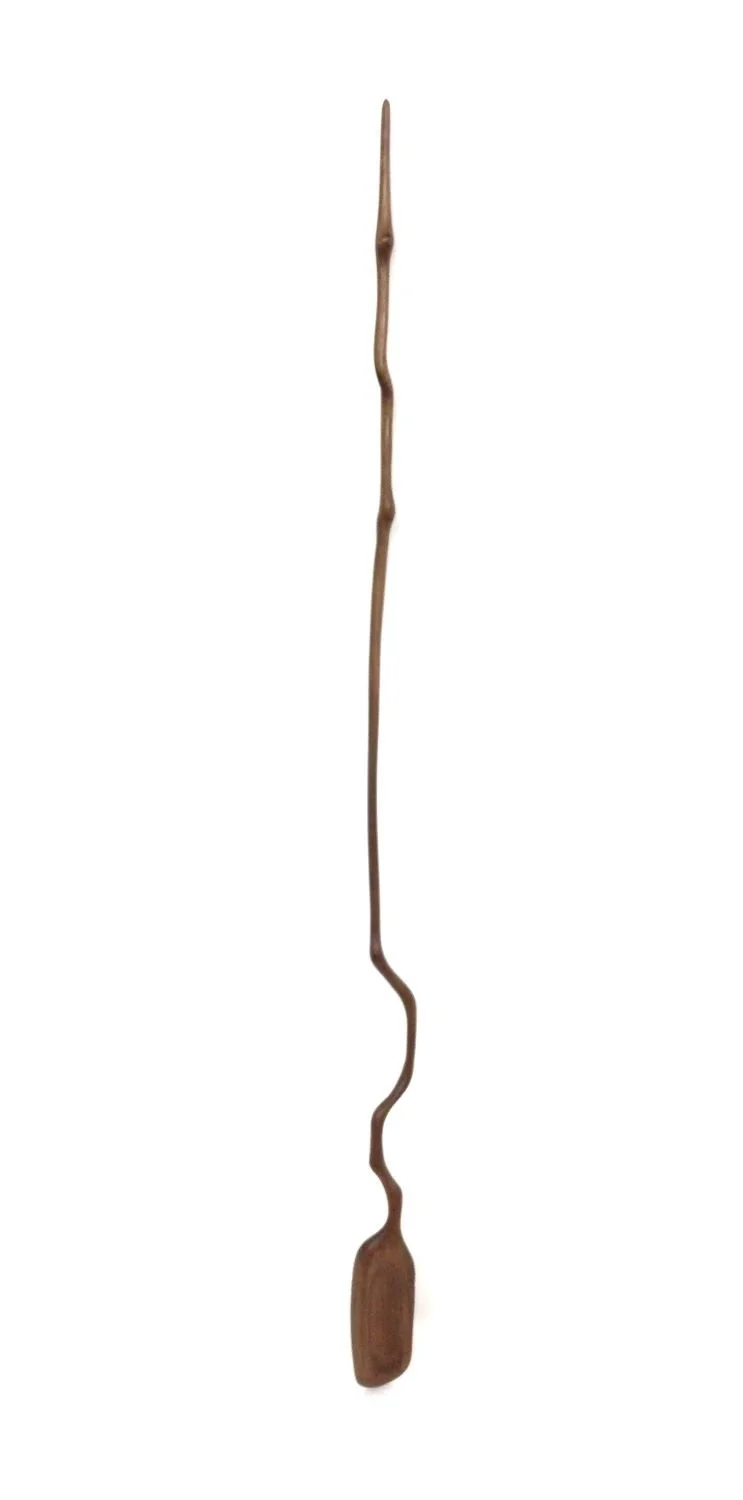
Prairie River Spoon (24.5), chiselled & hand sanded walnut, 21.5 inches (42 cm) long, sold
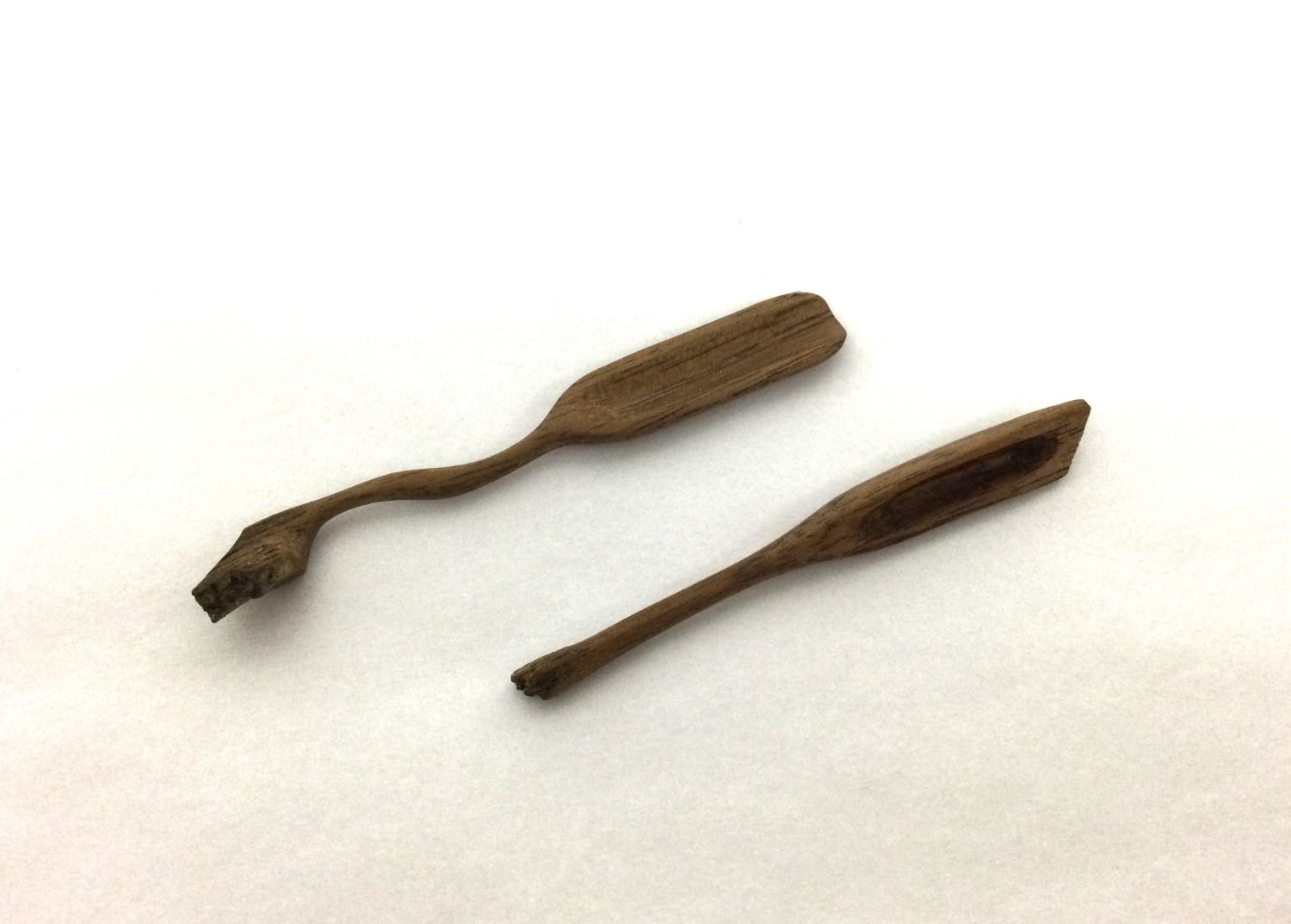
Tiny Spoons (24.2a & b), chiselled & hand sanded walnut, 2.25 x .25 x 1/8 inches (6 x .5 x .25 cm), sold.

Spice / Salt Spoons and a Butter Knife, chisel & hand-sanded walnut, (left to right) 4.5 x .5 inches (11.5 x 1.5 cm); 2.75 x 3/8 inches (7 x 1 cm); 5 x .5 inches (13 x 1.5 cm), sold.

Walnut Ladle (24.3), chiselled & hand sanded walnut, 17.5 inches (44 cm) long, sold.

left to right: Charcuterie Pick, 2023, chisel & hand sanded walnut, 9.25 inches (23.5 cm), sold; Spice or Salt Spoons, 2023, walnut & sandpaper, from 4.5 to 6.75 inches (11.5 to 17 cm) long, sold.

Curly Handled Sugar Spoon, 2023, chisel & hand sanded walnut, 4.5 x 1 inches (11.5 x 2.5 cm), sold.

top to bottom: Butter Knife, 2023, chisel & hand sanded walnut, 7.5 x 1 inches (19 x 2.5 cm), sold; Spice or Salt Spoons, 2023, walnut & sandpaper, from 4.5 to 6.75 inches (11.5 to 17 cm) long, sold.

Long-Handled Spoon (great for tasting), 2023, chisel & hand sanded walnut, 14 x .5 x .75 inches (35.5 x 1.5 x 2 cm), sold.

Long Handled Ladle, 2023, hand-sanded walnut, 24.5 x 1.25 x 1 inches (62 x 3.2 x 2.5 cm), sold.

Tongs (set), 2023, chisel & hand sanded walnut, 13 inches (33 cm) long, sold.

Curvy Handled Spoon, 2023, chisel & hand sanded Indonesia hardwood, 21.5 inches (54.5 cm), sold.

Walnut Charcuterie Board (set with Charcuterie Pick and Cheese Knife), sold.
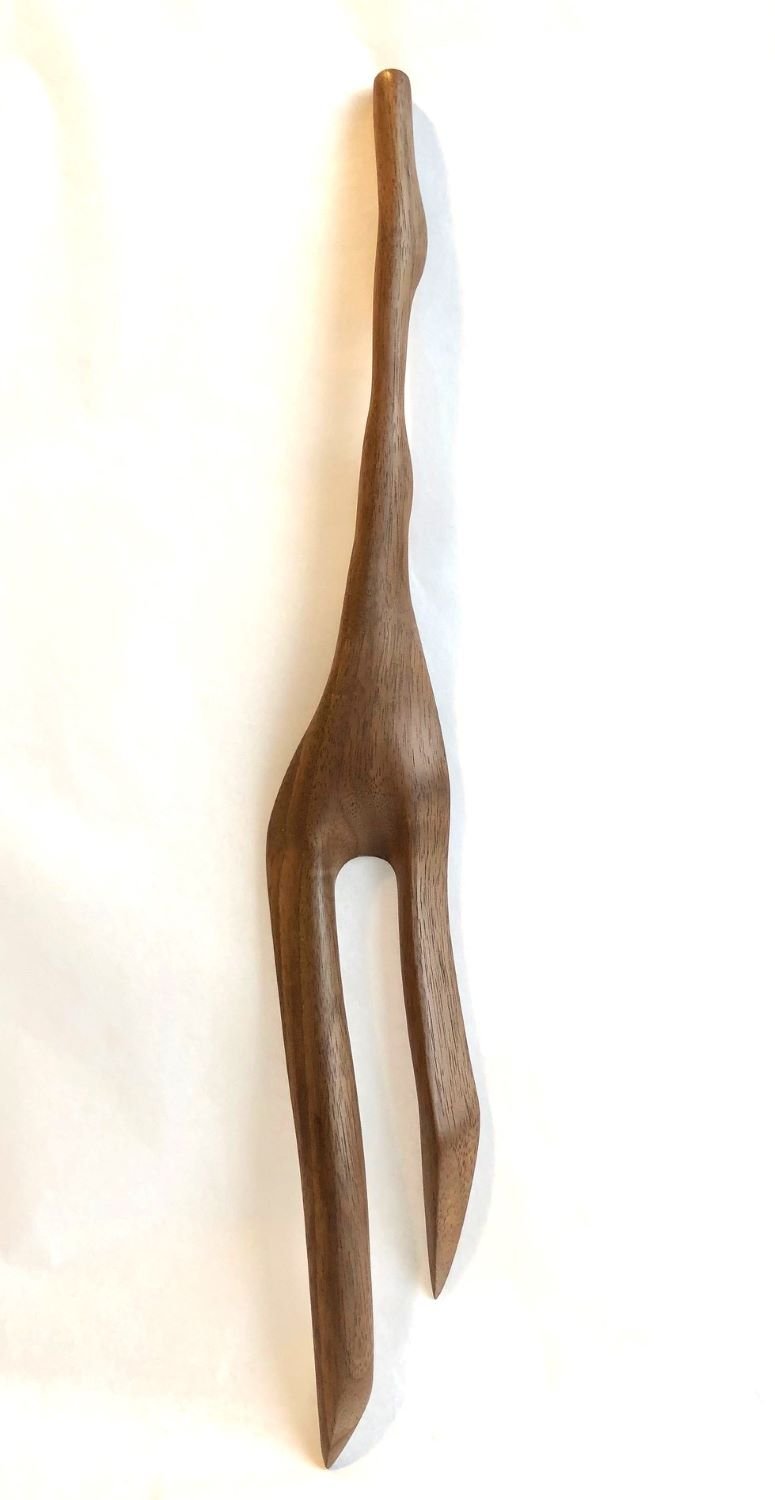
Walnut Salad Fork, 2024, chisel & hand sanded walnut, 14 x 2 inches (35.5 x 5 cm), sold.
Image: Fleming Zuhling, 2024, courtesy of Easton Zuhling
With a chisel and sandpaper on wood, in the calm of the night, the artist follows the grain and form of every piece of walnut. For the artist, each work is an exploration into how to express the vocabulary of every single object. The journey from beginning to end is dictated by the subtle feel of the wood in the hand.
Initially using a chisel, the artist shifts to 120-grit sandpaper and gradually works up to the 3000-grit level to achieve a silky-smooth surface on each piece.
***
Fleming Zuhling owns and operates Flatline Finishing in Medicine Hat, Alberta. He specializes in concrete needs for residential, rural, and commercial properties. Grain and cattle farming is also part of his repertoire. He is a Professional Member of the Alberta Craft Council. He and his wife have a busy young family.
…in the calm of the night…working with wood & sandpaper...
Field Stones:
During the last glaciation, much of present-day Canada—including southeastern Alberta—was buried beneath massive ice sheets. As glaciers advanced and retreated, they transported and deposited a wide range of sediments. One of the most prominent deposits is till—a poorly sorted mixture of clay, silt, sand, pebbles, cobbles, and boulders left behind as the ice melted. While till is typically angular and unstratified, meltwater streams on and beneath the ice sheet reworked some of this material, rounding the clasts and sorting them into more organized deposits such as outwash plains and eskers. These glacial sediments, remnants of an ancient and powerful process, are now scattered across the Canadian landscape, with particularly well-preserved deposits in southeastern Alberta.
The artist draws directly from this glacial legacy, transforming fieldstones—many of which were deposited by retreating glaciers—into sculptural works. By reworking these ancient materials, Zuhling echoes the natural processes of abrasion and reshaping, but through a human lens. His practice bridges geology and art, turning the silent residue of ice age forces into expressive, contemporary forms that reflect both deep time and the ongoing relationship between land and culture.
***
Private collections: United States, United Kingdom, Australia, and Canada.
Artist Statement:
If alone in the wilderness I wonder what one would need for not only the amenities of comfort and necessity, but also for beauty. I find inspiration in the abundance of nature. I strive to find beauty and function in harsh forms. I want to reveal their simple elegance. A patient eye and steady hand will find the subtle complexities of each piece. Therefore, I make the often overlooked, misunderstood, or placed-to-the-side objects.
Initially I tried to conform nature to the boundaries and confines of my own imagination, which led me to acknowledge nature’s unwillingness to abide by my rules. This changed my journey. With attention to the raw highlights, however small or often thought unimportant, my vision grows out from an abstracted perspective. When I work, I concede to nature, since the soul of the object, thought inanimate, is finding life and an identity within itself.
The natural beauty of the raw form is often all that is needed to inspire.
I was exposed to woodworking and carpentry at an early age by my grandmother, a music teacher and an accomplished finishing carpenter, who restored the local small-town church. Being with her in her workshop offered me my first glimpse into creating beauty with my hands.
My mother was a single parent in the 80s and 90s, with a limited support system, who was determined to be an art historian (she ultimately got her MA), this meant my younger brother and I were immersed in all things cultural. We heard and learned about the history of art throughout the ages, and we were brought along to university seminars, art exhibitions, art workshops, operas, symphonies, and any other possible opportunity that was available. I also attribute my appreciation of nature to the countless hours spent in the backcountry with my mother and brother. It is there I began carving by campfires and/or looking out over mountain lakes (a practice I maintain, since my journey continues).

